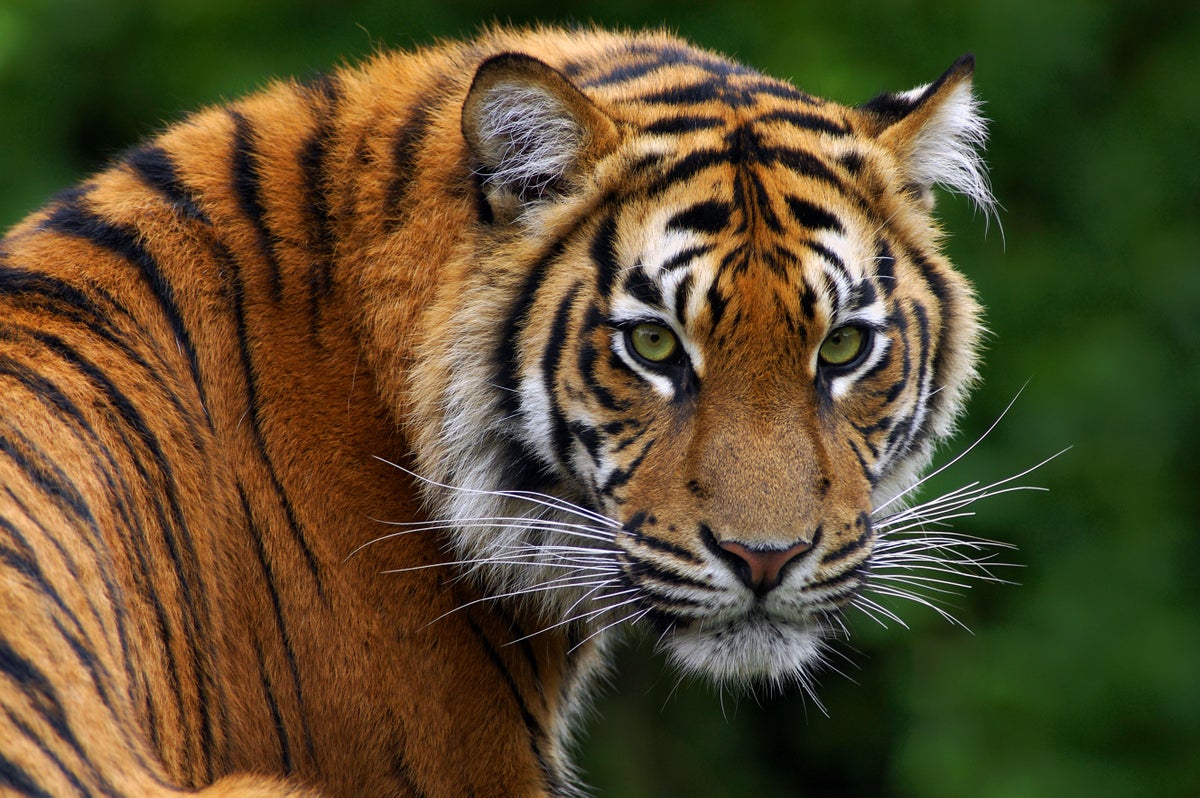Alan Turing’s Lost Work Could Reveal How Tigers Got Their Stripes
The world-famous mathematician Alan Turing found a possible mechanism for iconic animal patterns thanks to differential equations
Sumatran tiger (Panthera tigris sumatrae).
Today mathematician Alan Turing is world-famous because he helped the Allies achieve victory against the Axis powers by deciphering an encryption that was considered unbreakable. That story inspired the 2014 film The Imitation Game. Turing’s cryptographic work remained under wraps until the 1970s, however, so his incredible achievements only became known after his death.
During his lifetime, Turing was known among certain experts. He developed the mathematical model of a computer and explained which mathematical quantities it could calculate—and which tasks would exceed even the most sophisticated algorithms. He is also well known for a test that he developed, later named after him, that assesses how “human” artificial intelligence appears to be. For instance, if people cannot tell whether they are chatting to a real person or an AI, then the machine has passed the Turing test.
If you’re enjoying this article, consider supporting our award-winning journalism by subscribing. By purchasing a subscription you are helping to ensure the future of impactful stories about the discoveries and ideas shaping our world today.
When I first heard about this, I was puzzled. One of my physics professors mentioned a link between abstract mathematical operators and a tiger’s stripes in a first-semester lecture, a connection that made me and my fellow students laugh rather than think. After all, what could the pattern of a tiger’s skin have to do with abstract mathematics? Until then, I had assumed that some complex biochemical processes led to the tiger’s impressive patterns of dots and stripes—not something that could be represented by a tensor (a kind of high-dimensional table).
I now realize that I lacked Turing’s imagination. According to his mother, even as a child, he was a dreamer who marveled at the natural world around him. He wanted to understand his surroundings. Mathematics lent itself as a language to reduce even the most complex relationships to the essentials. And so Turing found a very simple mechanism that could explain nature’s patterns.
It was impossible to model all the interacting molecules of an animal embryo. Moreover, Turing was not an expert in biochemistry. Therefore, as is usual for mathematicians, he started with a very simple model. He investigated how two different pigment-producing molecules, which he generally called morphogens, spread from cell to cell.
Let’s assume that one morphogen is responsible for the color black and another for orange. The more black or orange morphogens there are, the more of these molecules are generally produced. In addition, these two substances influence each other: the orange morphogens can inhibit the production of the black ones.
This complex interaction can lead to a variety of situations. Sometimes small colonies of hares are kept in check by different foxes in the area. Translating that example to morphogens, one can imagine how a dotlike pattern similar to a cheetah’s fur could reflect that one morphogen has limited the spread of another.
Turing did not use the fox-and-hare visualization when he described how morphogens could move through an embryo’s cells, but he did take into account the phenomenon of diffusion. If a cell harbors many black morphogens, for example, and a neighboring cell harbors few of them, then the molecules strive to move such that they are distributed as evenly as possible.
When Turing investigated this problem, he did not have a powerful computer at his disposal and had to carry out many of the calculations by hand. He solved the differential equations, and he recorded how the two morphogens were ultimately distributed in the cells and observed how patterns emerged. In some cases, there were stripes; in others, he found dots or sometimes spots similar to those on cows. (If you would also like to experiment with the Turing mechanism but don’t feel like doing lengthy calculations, here is a simulator.)
Unfortunately, this work by Turing attracted little attention during his lifetime. Shortly after he published his research in 1952, the discovery of the DNA’s double-helix structure overshadowed everything else. It took about 20 years for biologists to rediscover Turing’s work, inspiring a new generation to test whether the Turing mechanism really does occur in nature. But the technologies required have only been available since the 2000s.
To prove Turing’s hypothesis, the corresponding morphogens must be identified in animals. Although this is not easy, a few cases are now known. For example, scientists identified two proteins in mice that produce the striped structure of their palate, and the arrangement of the animals’ hair follicles appears to be influenced by two other proteins. In the same way, the coloration of zebra fish is probably caused by the Turing mechanism, but it involves a complex interaction of three rather than two morphogens. These examples show that Turing’s ideas are not limited to color patterns but also apply to other structures.
And what about the tiger and its stripes? To date, morphogens have been most clearly detected in mice, which are much easier to study in the lab. But hopefully a future scientific strategy can be found to prove Turing’s mechanism beyond a doubt in big cats as well.
This article originally appeared in Spektrum der Wissenschaft and was reproduced with permission.
Manon Bischoff is a theoretical physicist and an editor at Spektrum der Wissenschaft, the German-language sister publication of Scientific American.
Source: www.scientificamerican.com
